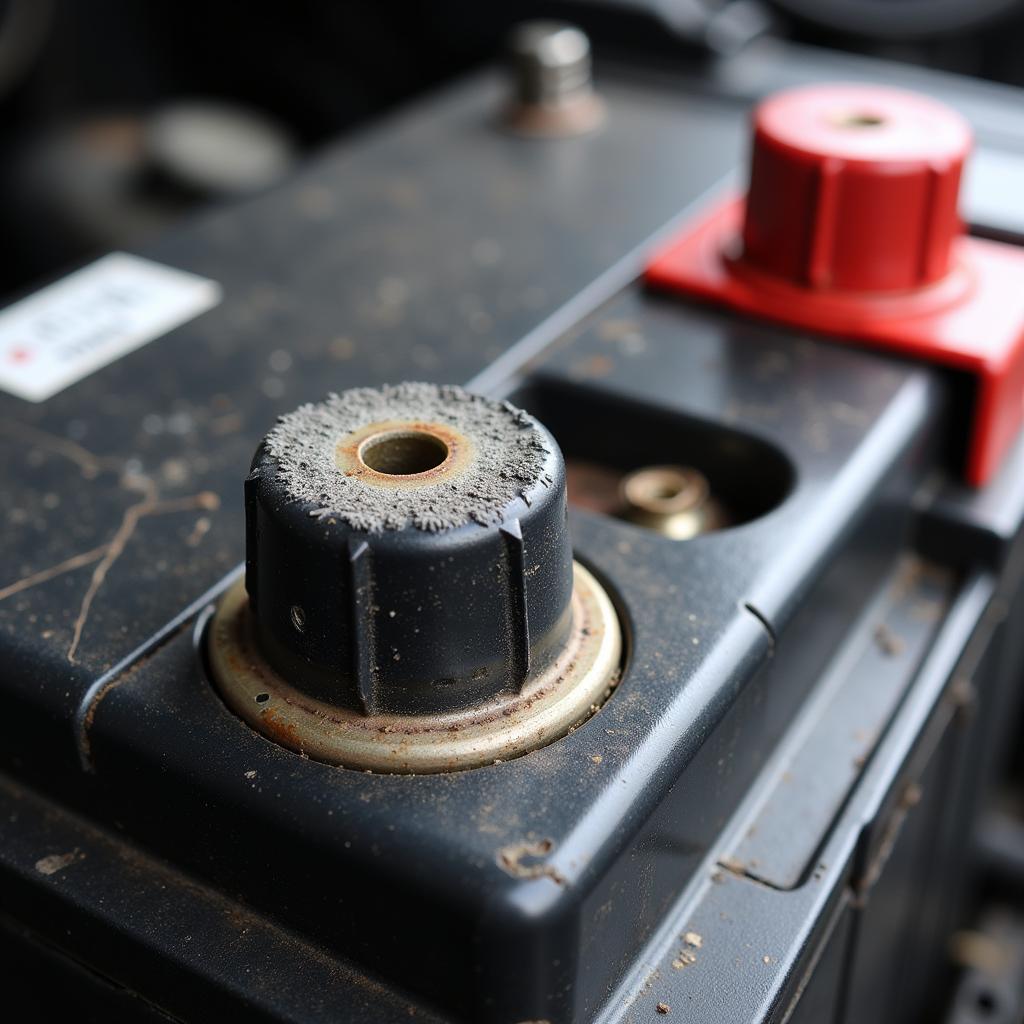The AdBlue warning light on your dashboard can be a frustrating and confusing experience. While the light itself might seem simple, understanding the potential causes and solutions requires a bit of technical knowledge. This article will guide you through the common reasons why your AdBlue light remains on, how to troubleshoot the issue, and how to reset the warning system.
What is AdBlue?
AdBlue is a urea-based solution that is injected into the exhaust system of diesel vehicles to reduce harmful nitrogen oxide (NOx) emissions. It’s an important part of the Selective Catalytic Reduction (SCR) system, which helps to clean the exhaust gases before they are released into the environment.
Why is my AdBlue warning light still on?
The AdBlue warning light can come on for various reasons, and the specific cause will vary depending on the car model and its engine system. Here are some common scenarios:
1. Low AdBlue Fluid Level:
This is the most common reason for the AdBlue warning light to illuminate. The light will typically flash for a short period when the fluid level is low, and it will turn on continuously when the fluid level reaches a critical point.
Solution: Simply refill the AdBlue tank with a compatible fluid. You can find AdBlue at most gas stations and auto parts stores.
Expert Tip: “Always use AdBlue that is approved for your vehicle. Using the wrong type can damage the SCR system.” – Dr. Emily Carter, Automotive Engineer
2. AdBlue Sensor Malfunction:
The AdBlue sensor monitors the fluid level and quality. If the sensor malfunctions, it can trigger the warning light even if there is enough AdBlue in the tank.
Solution: In this case, you might need to replace the sensor. Contact a qualified mechanic for diagnosis and repairs.
3. AdBlue System Malfunction:
The AdBlue system itself, which includes components like the injection pump, dosing unit, and SCR catalyst, can malfunction, causing the warning light to remain on.
Solution: Diagnosing and fixing AdBlue system problems can be complex. Contact a specialized mechanic or an authorized dealership for assistance.
4. Incorrect AdBlue Reset:
Some vehicles require the AdBlue warning system to be reset after refilling the tank. If this is not done correctly, the light might remain on.
Solution: Refer to your vehicle’s owner’s manual for specific instructions on resetting the AdBlue system.
Troubleshooting the AdBlue Warning Light:
- Check the AdBlue Fluid Level: First and foremost, check the fluid level in the AdBlue tank. If the level is low, refill it and see if the light turns off.
- Verify the AdBlue Quality: Ensure you are using the correct type of AdBlue for your vehicle.
- Check for Leaks: Inspect the AdBlue tank and system for any visible leaks.
- Reset the Warning System: Follow your vehicle’s manual for instructions on resetting the AdBlue warning system.
How to Reset the AdBlue Warning Light:
The process for resetting the AdBlue warning light can vary between car models. In some cases, you might be able to do it yourself, while in others, you might need to consult a mechanic or dealership.
Here are some common methods for resetting the AdBlue light:
- Using the On-Board Diagnostics (OBD) Port: Some vehicles can be reset through the OBD port. You’ll need a compatible OBD scanner and follow the instructions provided in the scanner’s software.
- Following the Manual’s Instructions: Refer to your vehicle’s owner’s manual for step-by-step instructions on resetting the AdBlue system.
- Using a Special Reset Tool: Certain manufacturers offer specific tools for resetting the AdBlue system. These tools may require the assistance of a qualified mechanic or dealer.
Expert Tip: “If you’re unsure how to reset the AdBlue warning light, consult a professional mechanic. Improper resetting can potentially cause further damage to your vehicle’s system.” – John Smith, Automotive Technician
Frequently Asked Questions (FAQs)
Q: Is it safe to drive with the AdBlue warning light on?
A: It’s generally not recommended to drive with the AdBlue warning light on for an extended period. Doing so can lead to engine damage and potentially cause the vehicle to go into “limp mode,” limiting its performance.
Q: How often do I need to refill the AdBlue tank?
A: The frequency of AdBlue refills depends on your driving habits and the vehicle’s fuel consumption. Check your owner’s manual for guidelines and monitor the fluid level regularly.
Q: What are the consequences of neglecting the AdBlue warning light?
A: Ignoring the AdBlue warning light can lead to:
- Engine damage: The SCR system won’t function properly, leading to increased emissions and potential engine damage.
- Vehicle performance issues: The vehicle may go into “limp mode,” reducing performance and limiting speed.
- Increased fuel consumption: The engine may need to work harder to compensate for the lack of AdBlue, resulting in higher fuel consumption.
Q: Can I disable the AdBlue system?
A: Tampering with the AdBlue system can be illegal and can lead to serious consequences. In addition, disabling the system will increase emissions and may cause long-term engine damage.
Remember, your AdBlue system is designed to protect the environment and ensure your vehicle’s longevity. If you have any concerns, consult a qualified mechanic or authorized dealership for assistance.


